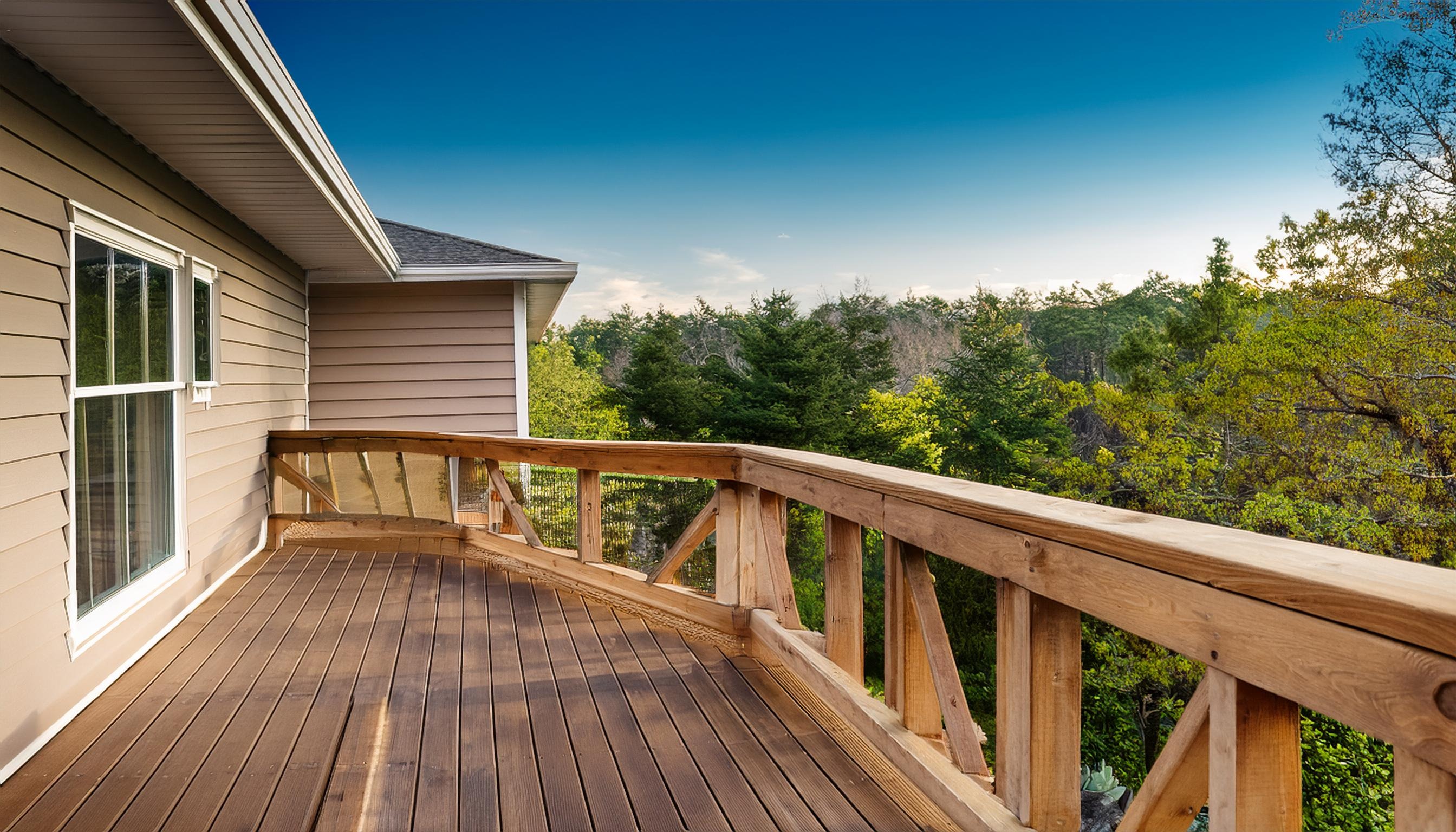Solutions for Stabilizing a Wobbly Deck Railing

Table of Contents
A wobbly deck railing is not just an annoyance; it poses a serious safety risk. Whether you’re preparing for a balcony inspection in California or just want to ensure your outdoor space is secure, addressing a shaky railing is essential. In this guide, we’ll provide actionable tips for fixing a wobbly deck railing, referencing crucial regulations such as SB 326 and SB 721 inspections to ensure compliance and safety.
Why Should You Fix a Wobbly Deck Railing?
A wobbly deck railing can lead to severe injuries if not addressed promptly. It compromises the overall safety of your deck, particularly for children and pets. In California, laws like SB 326 emphasize the importance of regular inspections for balcony and deck structures, ensuring that they meet safety standards. If your deck railing is unstable, it may also affect the results of your balcony inspection report, potentially leading to costly repairs or liabilities.
What Are the Common Causes of Wobbly Deck Railings?
Identifying the root cause of a wobbly railing is the first step in fixing it. Common reasons include:
- Loose Fasteners: Over time, screws, bolts, and nails can loosen due to weather changes and regular wear.
- Rotting Wood: Wooden railings are susceptible to rot, especially if they haven’t been properly maintained or sealed.
- Improper Installation: If the railing was not installed according to the manufacturer’s guidelines, it may lack the necessary support.
Contact DrBalcony for a professional inspection!
Ensure the safety of your balcony and living space with DrBalcony - We're a Tech Engineering firm that specializes in California SB326 & SB721 balcony inspections. Over 300+ completed projects in California.
Request A Free EstimateClick To CallHow Can You Tighten Loose Fasteners?
What Tools Do You Need?
To tighten loose fasteners, gather the following tools:
- Screwdriver or drill
- Wrench (if using bolts)
- Wood glue (for added stability)
How Do You Proceed?
- Inspect Each Connection: Go along the railing, checking every screw, bolt, and connection point.
- Tighten Loose Fasteners: Using your screwdriver or drill, tighten any loose screws. For bolts, use the appropriate wrench to ensure a snug fit.
- Check for Stripped Holes: If any screw holes are stripped, you may need to fill them with wood filler and drill new pilot holes for a secure fit.
How Can You Replace Rotting Wood?
When Should You Replace Wood?
If you discover that your railing’s wood is soft or crumbling, it’s time for a replacement. Using rotting wood compromises safety and may lead to further issues down the line.
What Are the Steps to Replace It?
- Remove the Affected Sections: Carefully remove the rotting pieces using a saw or pry bar, taking care not to damage adjacent areas.
- Measure and Cut New Wood: Cut a new piece of wood to match the dimensions of the old one. Use pressure-treated lumber for durability and resistance to rot.
- Secure the New Wood: Attach the new section using exterior-grade screws, ensuring it is tightly fitted.
When Should You Consider Professional Help?
If your wobbly deck railing issues persist even after tightening fasteners and replacing wood, it may be time to consult a professional. Indicators that you need expert help include:
- Severe Structural Damage: If you notice signs of significant rot or instability in the deck itself, a professional deck inspection is crucial.
- Code Compliance Issues: An expert can ensure that your repairs comply with California’s building codes, including SB 721 inspections, which emphasize safety and structural integrity.
How Can Regular Inspections Help Prevent Future Issues?
Regular deck inspections can help you catch problems early, preventing costly repairs and safety hazards. During your inspections, consider the following:
- Check for Loose Fasteners: Make tightening screws and bolts a part of your seasonal maintenance.
- Inspect for Rot: Look for signs of decay in both the railing and the deck surface.
- Assess Structural Integrity: Ensure that the deck is stable and securely anchored to its supports.
In California, SB 326 mandates regular inspections for multi-unit residential buildings, including balconies and decks. Complying with these regulations not only enhances safety but also protects property owners from potential liabilities.
Fixing a wobbly deck railing is not just a maintenance task; it’s a critical step toward ensuring safety for everyone who uses your outdoor space. By addressing issues promptly and considering professional inspections, you can avoid costly repairs and ensure compliance with regulations like SB 326 and SB 721.
For further insights on balcony and deck safety, be sure to explore more articles on Dr. Balcony’s blog. Prioritizing safety in your outdoor spaces will provide peace of mind for you and your loved ones.
Contact DrBalcony for a professional inspection!
Ensure the safety of your balcony and living space with DrBalcony - We're a Tech Engineering firm that specializes in California SB326 & SB721 balcony inspections. Over 300+ completed projects in California.
Request A Free EstimateClick To CallFAQ Section: Top Questions & Answers
My property is well-maintained. Do I really need SB-326/SB-721 inspections?
YES! Even with excellent maintenance, hidden issues can develop due to construction errors, material flaws, or severe weather exposure. Inspections are about ensuring those don’t turn into major problems.
Our balconies were inspected a few years ago – isn't that enough?
Unfortunately, no. California laws mandate inspections on a set schedule, often every 6 years. Deterioration can happen quickly, making regular assessments essential.
Can I use my regular handyman for the balcony inspection?
It’s not recommended. Unless they hold specific licenses (architect, structural engineer, etc.) their inspection won’t be considered valid for SB-326/SB-721 compliance.
What if the inspection uncovers major issues?
First, don’t panic! Early detection often means less extensive (and expensive) repairs are needed. Work with your inspector to prioritize fixes, and explore if they offer repair services for a streamlined solution.
I'm worried about the cost of inspections. Are there any resources to help?
Start by getting detailed quotes from multiple companies. Factor in that proactive inspections help you avoid even bigger costs down the line due to neglected problems. Some property management associations offer guidance on budgeting for balcony compliance.
- List Item #1
- List Item #1
- List Item #1
- List Item #1
- List Item #1
I started off by doing 1 inspection with them back in June because I knew it needed work done. Now, they’ve completed 2 of my properties and have 2 more inspections coming up this month. All great so far! They’re great at keeping me updated
- List Item #1
- List Item #1
- List Item #1
- List Item #1
- List Item #1
I would like to share the fact that this company has been extremely honest and helpful with this challenging project. Balcony and walk way repairs are very expensive, so you want the very best professionals next to you
- List Item #1
- List Item #1
- List Item #1
- List Item #1
- List Item #1
Greg was very helpful in explaining the entire process. They walked me through everything and helped me keep both of my properties in compliance!

